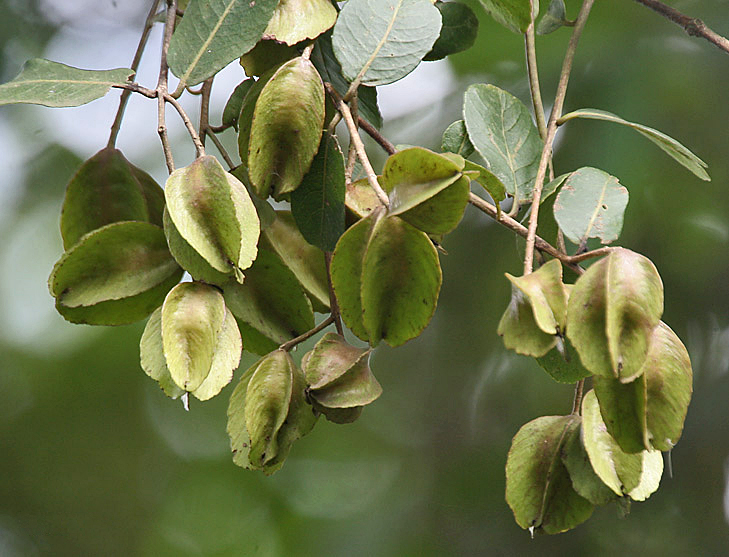Terminalia arjuna
Species
Families
Local Names
Genus
Native/Introduced
DNA Barcode
Description
Terminalia arjuna is a tree of the genus Terminalia. It is commonly known as arjuna or arjun tree in English. The arjuna grows to about 20–25 metres tall; usually has a buttressed trunk, and forms a wide canopy at the crown, from which branches drop downwards. It has oblong, conical leaves which are green on the top and brown below; smooth, grey bark; it has pale yellow flowers which appear between March and June; its glabrous, 2.5 to 5 cm fibrous woody fruit, divided into five wings, appears between September and November. The tree does not suffer from any major diseases or pests, but it is susceptible to Phyllactinia terminale and rot due to polystictus affinis.
The arjuna is one of the species whose leaves are fed on by the Antheraea paphia moth which produces the tassar silk, a wild silk of commercial importance. Larvae of this species feed mainly on Terminalia trees (e.g. Terminalia tomentosa, T. arjuna) and on Shorea robusta. It also eats many other kinds of plants, with various ecoraces specializing on certain taxa. Other plants appearing in its diet include Indian jujube (Ziziphus mauritiana), axlewood (Anogeissus latifolia), jambul (Syzygium cumini), Madhuca indica, kumbi (Careya arborea), anjan (Hardwickia binata), and species of teak (Tectona spp.) and crepe myrtle.
Tussar silk from this and related species of wild silkworms is a different color from domesticated silkworm silk, and it is coarser and stronger, making it more favorable in some applications.
Like the domesticated silkworm, this species is susceptible to pébrine, a disease caused by microsporidian fungi in the genus Nosema. It is lethal to the larvae. It is also commonly infected with the Antheraea mylitta cytoplasmic polyhedrosis virus" (AmCPV), a cypovirus which has been reported to destroy around 20% of each silk crop by inducing diarrhea in the larvae, leading to a condition known as grasserie. Natural enemies of this silkworm include the uzi fly (Blepharipa zebina), which is a parasitoid that uses the silkworm larvae as a food source for its maggots. Many ecoraces are threatened due to extensive deforestation and the collection of cocoons from wild populations. Wild silks have been known and used in many countries from early times, although the scale of production is far smaller than that from cultivated silkworms. Silk cocoons and nests often resemble paper or cloth, and their use has arisen independently in many societies. Some of the best quality wild silk is produced by silkworms in Henan. This is the only type of wild silk that can be easily dyed.









































































































































